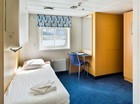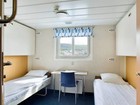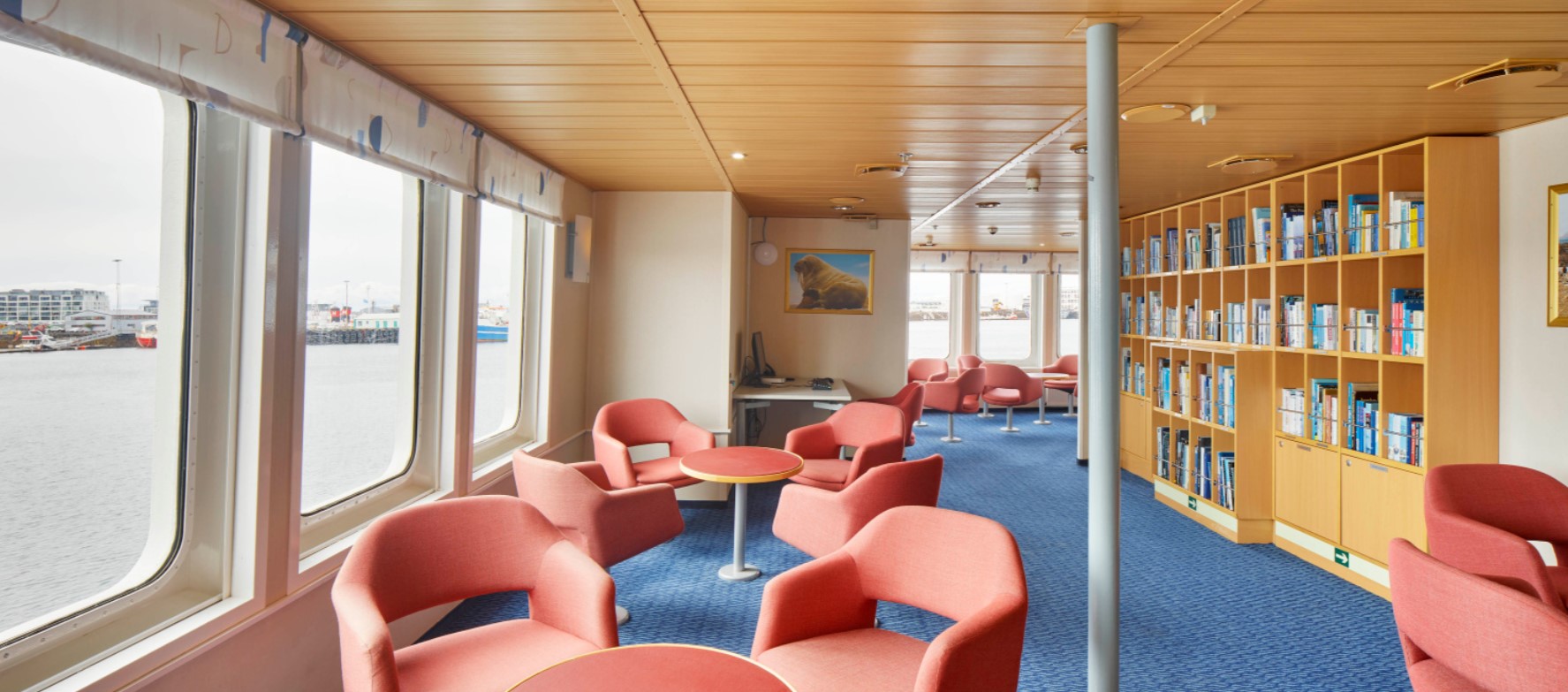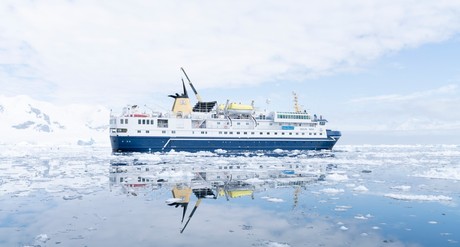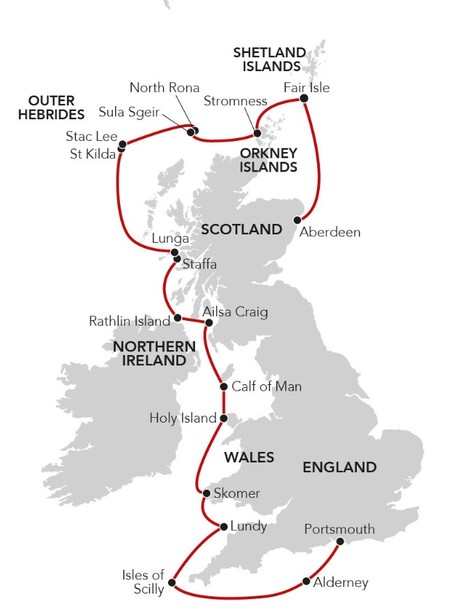The seabird islands of the western British Isles are the envy of the birding world, yet it is not easy to sample the wonderful diversity of their character and come face-to-face with seagoing inhabitants. This unusual expedition cruise will appeal to those who wish to explore our coastal waters, observe the marvellous seabird and marine life and walk across untouched coastal wilderness areas. The focus of our expedition is the prolific birdlife but the region is also rich in historical and cultural heritage and with our naturalists and local guides we will discover some of the most remote and uninhabited islands that surround the coast of Britain together with inhabited islands such as Alderney and Fair Isle.
Cruising aboard the 84-passenger Ocean Nova, we will be able to enjoy expedition cruising at its best. Although we will set sail with a schedule, it will not be set in stone. The Captain and expedition team keep a flexible approach allowing you the opportunity to fully experience the unexpected, whether it be a sighting of dolphins, a whale or any unusual event. Our exploration of inlets, estuaries and protected coastal waters will be made all the more enjoyable by the use of our Zodiac landing craft which enable us to land in remote places such as St Kilda, providing for an unusual perspective and making the otherwise inaccessible readily available. This is a wonderful opportunity to see some of our most beautiful places and view some of the extensive birdlife. No matter your level of expertise you will find a warm welcome and a cornucopia of stunning sights and sounds.
Embark the Ocean Nova this afternoon. A transfer will be provided from Portsmouth Harbour Railway Station at a fixed time. Enjoy welcome drinks and dinner as we sail this evening.
Spend the morning on Alderney where our onboard team will lead a series of walks to explore the island. Visit the island’s only town, St Anne, which has all the old world charm of a Normandy village with tiny squares and pastel shaded cottages and shops. You may wish to visit the museum which is packed with historical artefacts ranging from the Romans to the German occupation during the Second World War. Those feeling active can join a walk to see the German fortifications and Victorian forts along the coastline before arriving at Les Etacs gannet colony. These rocks are situated just 100 metres offshore and are home to 6,000 pairs of gannets. Return to the ship for lunch and maybe join a lecture during our afternoon at sea.
Spend the morning on traffic-free Tresco, walking its idyllic lanes from the beach to the famous subtropical Abbey Gardens. Defying the Atlantic weather, this miracle of a garden is home to more than 20,000 species of plants from over 80 countries. Enjoy time to wander along the paths, maybe visit the Valhalla collection of ship figureheads from ships wrecked on the islands or relax in the café. We spend the afternoon on St Agnes, the most south-westerly community in the UK. Surrounded by rocks and reefs this delightful tiny island offers marvellous coastal walks. The small island of Gugh lies across a narrow sandbar and here we find a single stone monolith called the ‘Old Man of Gugh’ which dates back to the Bronze Age. En-route we plan to sail past the nearby island of Annet, the second largest of the uninhabited islands and a bird sanctuary. We will cruise by to see the coastline alive with puffins, European storm petrels and shag.
This morning we will explore Lundy, a remote island in the Bristol Channel. Walk along its traffic-free lanes and paths, explore the wide bays and coves by way of hanging valleys, observe the puffins nesting in abandoned rabbit warrens, have a drink at the inn and buy some of the island’s ‘puffin stamps’ at the shop. This afternoon we will sail on to Skomer Island and discover the coastline on a Zodiac cruise. One of the most important wildlife sites in Northern Europe, this island has fantastic birdlife including 6,000 pairs of puffins, countless numbers of guillemots, fulmar, kittiwakes and the elusive Manx shearwater and storm petrel. Return to the ship and later this evening we hope to sail around Grassholm; be on deck to view one of the world’s largest gannetries with over 34,000 breeding pairs.
Over breakfast we arrive at Holyhead, adjacent to Anglesey with its spectacular sea cliffs. Here we will visit the RSPB’s reserve at South Stack, a beautiful but fragile maritime sward and heathland which is home to a large population of guillemots and razorbills. If we are lucky, we might also see some choughs. Returning to the ship for lunch we hope to arrive in the late afternoon at the Calf of Man, a 600 acre island situated off the southern tip of the Isle of Man, and home to thousands of seabirds including Manx shearwater, kittiwake and razorbill. Meanwhile in the water we may be lucky to see dolphins and seals.
In the early morning we will anchor off the granite island of Ailsa Craig. This tiny island, just 2.5 miles in circumference was once a refuge for sailors and base to a 19th century lighthouse. Today it is an RSPB reserve and home to the third largest gannet colony in Britain. We will use the Zodiacs and cruise the coastal waters for a closer look searching for puffins, guillemots and gulls. Sail in the late morning towards Rathlin Island. Located just a few miles from the North Antrim coast, Rathlin has been settled for more than 6,000 years. Today, there are only 80 or so inhabitants, whereas before the famine there were 1200. Enjoy a guided walk which will take in the prolific seabird life with astonishing numbers of auks, kittiwakes and grey seals. This evening we will sail past the magnificent cliffs to the north of the island which are home to the largest sea bird colony in Ireland.
Overnight we will sail to Staffa, where the perpendicular rock face features an imposing series of black basalt columns, known as the Colonnade, which have been cut by the sea into cathedralesque caverns, most notably Fingal’s Cave. Weather permitting, we will use our Zodiacs to explore closer. We continue to Lunga, the largest of the Treshnish Isles. Of volcanic origin, Lunga has been described as a ‘green jewel in a peacock sea’. Populated until the 19th century, the island still bears the remains of black houses. There is prolific birdlife on the island including storm-petrels, puffins, kittiwakes and Manx shearwaters.
Mid-morning we cruise past two of the largest gannetries in the world at Stac Lee and Boreray. These impressive stacs rise 170 metres from the sea and are home to up to 60,000 breeding pairs of northern gannet. Afterwards we sail the short distance to St Kilda, a remarkable uninhabited archipelago some 50 miles beyond the Outer Hebrides. Dominated by the highest cliffs and sea stacks in Britain, Hirta, St Kilda’s main island was occupied on and off for at least 2,000 years, with the last 36 Gaelic speaking inhabitants evacuated at their own request in 1930. Immediately after the evacuation, the island was bought by the Marquess of Bute to protect the island’s thousands of seabirds including puffin and fulmars, and in 1957 it was bequeathed to the National Trust for Scotland. St Kilda is one of the few UNESCO World Heritage Sites with dual status reflecting its natural and cultural significance. After landing by Zodiac our expedition staff will lead several guided walks on the island.
Spend the day around North Rona, an isolated island some fifty miles north of Cape Wrath. The last islanders left North Rona in 1844 and today it is home to thirteen species of breeding seabirds including large colonies of great black-backed gulls, great skuas and puffins. There is also a large population of grey seals which we hope to observe on a Zodiac cruise. If weather permits we will also visit the gannet colony on Sula Sgeir home to over 5000 breeding pairs and renowned as the least visited national nature reserve in Britain.
Over breakfast we arrive in the Orkney Islands. From our berth in Stromness we head into the west of Mainland, Orkney’s largest island. We will pass the rugged sea cliffs of Marwick Head, a designated Site of Specific Interest for its breeding seabirds, especially kittiwakes and guillemots, and we may also be lucky and see whales and dolphins offshore. Continue to the wild and windswept beauty of Birsay Moors where a dramatic sweep of moorland and blanket bog fringed by grassland and wetland is home to some of Orkney’s iconic residents including hen harriers, short eared owls and Arctic skuas whilst we can listen for the distinctive call of the red-throated divers. There will also be the option to visit the Neolithic Heartland of Orkney; an area designated as a World Heritage Site due to its wealth of pre-historic archaeology. We will see the Standing Stones of Stenness and the Ring of Brodgar which is a huge ceremonial circle of stones dating back almost 5000 years. We continue to the 5000-year-old village of Skara Brae and see the remarkable dwellings revealed from beneath the sand dunes by storms only 150 years ago.
Anchor over breakfast off the remote island of Fair Isle. Located midway between the Shetland and Orkney Islands, the tiny population of sixty or so islanders always extend us a warm welcome. Enjoy a walk across the island searching out the puffin slopes, perhaps visit the community hall for a cup of tea or maybe purchase some of the famous knitwear. Sail over lunch and spend the afternoon at sea as we return to mainland Scotland.
Disembark this morning after breakfast. Transfers will be provided to the Aberdeen International Airport and Railway Station at a fixed time.
Itineraries are subject to change.
28 April, 2024 to 09 May, 2024
 Ocean Nova Ocean Nova
|
|
|
Book now
|
Category 1 Bunk Bedded cabin for twin use
Category 1 Bunk bedded cabin for sole use
Category 2 Standard twin sole use
28 April, 2025 to 08 May, 2025
 Ocean Nova Ocean Nova
|
|
|
Book now
|
Category 1 Bunk Bedded cabin for twin use
5 cabins on the Upper Deck with bunk beds
4 cabins are at the stern of the Upper Deck contain 1 bunk-bed and 1 lower berth
12 Upper Deck and 16 Bridge Deck cabins with twin beds
Category 1 Bunk bedded cabin for sole use
5 cabins on the Upper Deck with single bed
Category 2 Standard twin sole use
Inclusions
• Voyage on board in selected cabin category
• House wine, beer and soft drinks with lunch and dinner on board
• Expedition team
• Shore excursions as per the itinerary (Note: Some itineraries have optional excursions as per the specific exclusions)
• Gratuities
• Port Charges/ Taxes
• Transfers as per the itinerary (Note: Transfers are offered in conjunction with group flights only when booked together, both can be taken off if included in the itinerary and credited)
Exclusions
• Passport and Visa costs where applicable
• Travel insurance
• Beverages other than those listed in inclusions
• Meals when not on board the ship unless otherwise stated
• Pre and post voyage accommodation unless otherwise stated
• Optional excursions as per specific itinerary
• Any items of a personal nature
